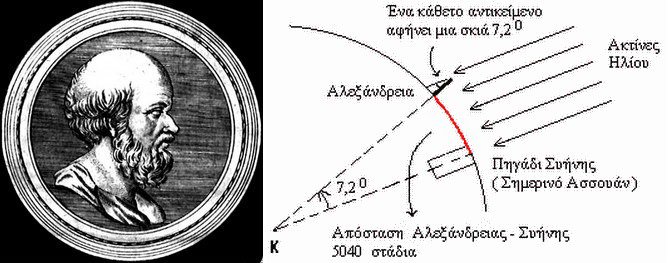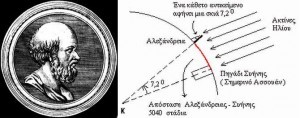An interesting Business Insider video illustrates how ancient Greek mathematician Eratosthenes calculated the Earth’s circumference, over 2,000 years ago.
Using a stick, Eratosthenes calculated that the Earth’s circumference is approximately 40,030 km, a figure that mid-20th century scientists came up with after launching satellites into space.
Eratosthenes, who was the head of the Library at Alexandria, had heard that in Syene; a city south of Alexandria, no vertical shadows were cast at noon on the summer solstice. The sun was directly overhead. He wondered if that happened in Alexandria as well.
So, on June 21 he planted a stick directly in the ground and waited to see if a shadow would be cast at noon. Indeed, there was one and it measured about 7 degrees.
Eratosthenes must have believed that the Earth’s surface is curved before he performed that test. This is probably why he wanted to confirm that if the sun’s rays are coming in at the same angle at the same time of day, and a stick in Alexandria is casting a shadow while a stick in Syene is not, it must mean that the Earth’s surface is curved.
The idea that Earth is a sphere was first introduced by another ancient Greek mathematician, Pythagoras, around 500 BC and validated by Aristotle about 200 years later. Thus figured that he could estimate the circumference of the entire sphere.
Based on the shadow length of 7 degrees in Alexandria and 0 degrees in Syene, Eratosthenes calculated that the two cities are 7 degrees apart on Earth’s 360-degrees surface. Then he hired a man to pace the distance between the two cities and learned they were 5,000 stadia apart, which is about 800 kilometers.
Eratosthenes then proceeded to find the Earth’s circumference — 7.2 degrees is 1/50 of 360 degrees, so 800 times 50 equals 40,000 kilometers. This way, he found the almost exact circumference of the planet using only a stick and his brain.

































